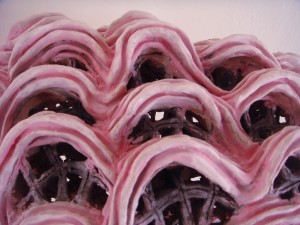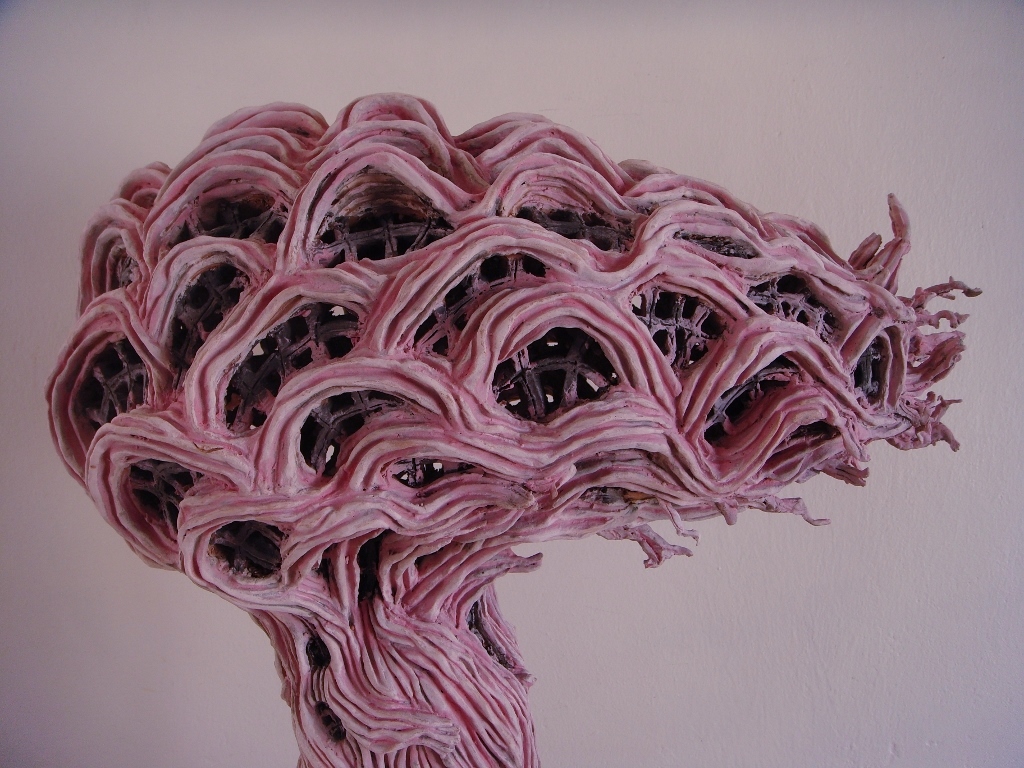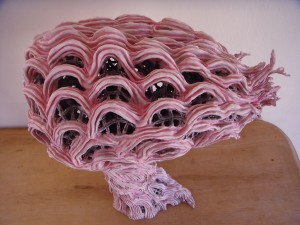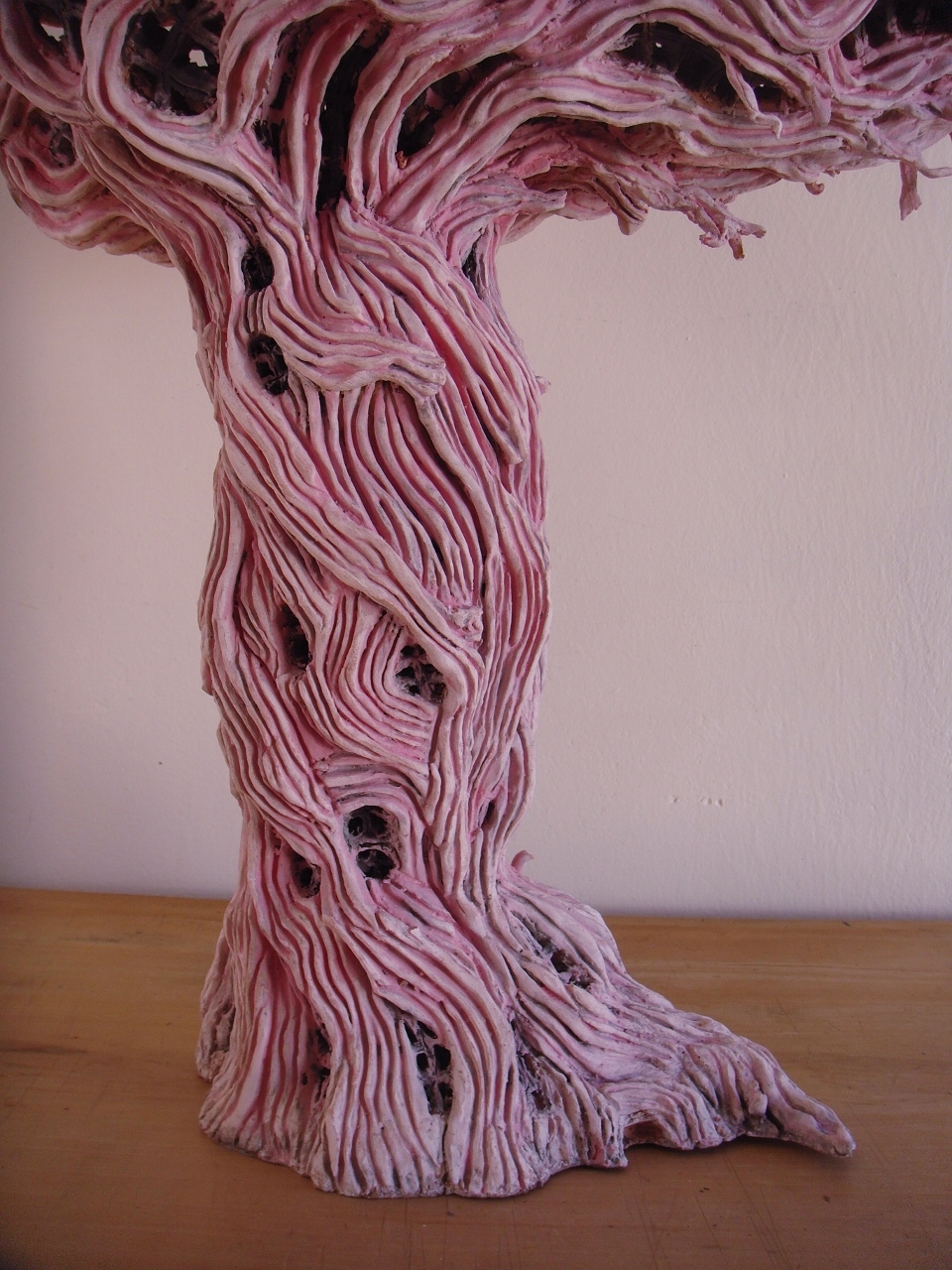
Adriaan de Villiers is one of the participants of the ‘Valuka Art Competition 2014’.
Till October 15 his work is shown in Art b Gallery, Cape Town, SA.
Statement of the artist:
Towers form the main body of my work. The tower refers to: The Tower of Babel and is a symbol of power. My ceramic sculptures are an unorthodox protest against sterile, modern architecture.
The Spanish architect, Gaudi, is one of my main influences. Hundertwasser, Russian architecture, Outsider Art and Gustav Klimt inform my sculptures.
My sculptures are inspired by the appearance of flowers from South Africa. Other forms in nature such as shells influence my work. My recent sculptures are inspired by trees such as the South African Milkwood Tree and the Juniper Tree. A tree is often a religious symbol. In the Bible a Juniper Tree with an angelic presence sheltered the prophet Elijah from Queen Jezebel’s pursuit.
I explore the idea of why everyday objects are endued with religious significance. At the same time exploring the dualism between superficial ‘ornament’ and deeper spiritual meaning attached to religious iconography.
These influences are combined to create my own individual and imaginative version of architecture and nature. My domed sculptures are reminiscent of fairy tale castles, but with a humorous perspective on it. I elaborate on the idea of the house as a container of effects.
The Rich Sculptures of Adriaan de Villiers
Adriaan de Villiers (Cape Town, 1984) names in all of his descriptions of his work the Spanish architect, Gaudi as one of his main sources of inspiration. He knows his work mainly through pictures though. When de Villiers was in the Netherlands recently with the Thami Mnyele artist-in-residence program in Amsterdam, he decided to go to Barcelona. The journey was for many reasons eye-opening. The wonderful creations of Gaudi surpassed his greatest expectations. He realised more than ever that he is capable of taking the reality of what Gaudi created, and make a personal interpretation of what he saw.
De Villiers chose ceramics as his discipline. He makes rough sketches of his next sculpture and sculpts it without losing his original vision for it. When other ideas arise during the creation process, these are freely expressed. He finds it little problem when the kiln surprises him with unexpected and unintentional colours. He finds the surprise-element an attractive side to ceramics. By preference he makes large sculptures. One and a half to two meters high is no exception. He finds it fun when the viewer stands eye-to-eye with his work, if he himself does not become intimidated by it.

De Villiers is fascinated by architecture. His latest series comprises various different types of towers. He chooses towers so that he can make diverse references with it. Towers such as ‘The Tower of Babel’. The tower as a phallic symbol, but also the tower as religious symbol. The heavy symbolism may be taken seriously, but the artist gives us a humorous take on these themes.
In his formal execution there are various details to be observed. The angles are not straight and the colours are not strict. These are frivolous and loose.
Adriaan de Villiers’ influences are varied. The voluptuous extravagance of Gaudi is obviously present in his sculptures. The brashness of Hundertwasser is unmistakably observed. The richness of Russian architecture also leaves its traces. Even the erotic laden symbolism of Gustav Klimt is hard to ignore. Eventually the references are undermined. They never form more than a starting point, a beginning of a personal, fantastical journey. The South African places a degree of awkwardness in his sculptures. It is not smoothly finished. Not everything is in balance. Yet another way of distancing himself from heavy subject matter.

De Villiers observed all sorts of buildings in Holland. Churches, but also the Hermitage where he could familiarise himself with Russian architecture. One way or other these will make an impression on his work. It is important to realise, that the most important influence on his figurative language still finds its origins in his fatherland. The South African Flower Kingdom finds the most direct translation in his baroque sculptures (the titles does not allow there to be a misunderstanding).
In 2010 South Africa hosts the soccer World Cup. At the moment all sorts of stadiums are being built by foreign architects, because the country has a lack of expertise in the field. Against this backdrop the stadium sculptures of de Villiers must be seen. It is a colourful, extravagant and unorthodox protest against these developments.
The artist stands open for other cultures, but he does not plan to sacrifice his own culture.
Rob Perrée
Amsterdam: December 2009


